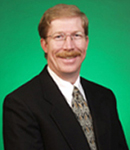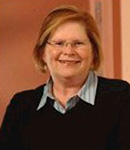Prior to 2013, Boise State University’s online Master of Science in Organizational Performance and Workplace Learning (OPWL) was known as the Master of Science in Instructional and Performance Technology (IPT). This blog post contains testimonials from the classes of 1994-1997.
 Jim Fuller, Class of 1994
Jim Fuller, Class of 1994
Director of Engineering Education
Network Appliance, Inc.
Since completing the program, my success in the field of human performance technology (HPT) can be measured by the following achievements:
- Became the Director HPT for the Hewlett-Packard corporation.
- Authored three published books in the HPT field as well as contributing to several chapter books.
- Authored books translated into five languages.
- Made over 150 conference presentations including a Master’s Series at ISPI conference.
- Worked as an independent consultant for 10 years, assisting organizations with HPT projects and transitioning to HPT, including notable organizations such as Proctor & Gamble, US Navy, Levi Strauss, and Oracle.
- Invited guest lecturer at three universities (SJSU, SDSU, Auburn University).
- Over 100 HPT projects either led or implemented, with ROI results ranging fro 12:1 to 52:1.
- Completed course work for an Ed.D. from USC in HPT in the workplace with a 4.0 GPA.
- Elected to the Board of Directors of ISPI
Little of this would have been achieved were it not for my participation in the Boise State Instructional & Performance Technology graduate program.
 Brent Doncaster, Class of 1995
Brent Doncaster, Class of 1995
Sr. Program Manager
Citrix Systems, Inc.
What the IPT degree did for me was that it provided the equivalent of 10+ years work experience in the field and allowed me to be the peer of people who had spent their entire careers in the training and education fields. I would add that the degree also gave me an advantage in that I was already at a position of knowledge and understanding-ahead of my colleagues who were just then beginning to figure out the whole notion of “Human Performance Improvement” and how to execute in that space. In many ways I was already executing in this space-in essence I was years ahead of many of my peers.
I can also say this: In 2000, the IPT degree also helped “set me apart” and helped me to transition into a new role in the training industry, in a new organization in South Florida-the organization I still work for, is a $1.1 billion software company with 3500 employees world wide, is one of the top 20 software firms in the world, and is continuing to grow rapidly. The IPT degree got me “noticed and ultimately helped me get hired.”
 Karie Willyerd, Class of 1997
Karie Willyerd, Class of 1997
Chief Learning Officer
Sun Microsystems, Inc.
The IPT degree program launched me into the next level of career success, by stimulating not only my ability to apply for and obtain a new role, but also making me feel a doctoral program was within reach. Within five years of finishing the IPT degree, I received a doctorate from Case Western Reserve in management. If Boise State had offered a doctorate, I would not have had to look elsewhere, and would likely have stayed with a degree specific to my field. Now with both a master’s and doctorate, I have the career credentials which allowed me to obtain a role as the chief learning officer for a Fortune 200 company.
Here is her story written in 1999.
Exec Climbs Corporate Ladder Via Long-Distance Program
(written by Judy Grigg Hansen, originally published in the BSU Focus Magazine in 1999)
Karie Willyerd never set foot on the Boise State campus until she attended her graduation ceremony in 1997.
To get to that moment, she took classes over the Internet from her home base in Fort Worth, Texas, to earn her master’s degree in instructional and performance technology.
“It is hard to find such a diversity of working professionals in a traditional program,” Willyerd says. “I was amazed at how much sense of classroom you could create in an online environment. The camaraderie with the other students was very collegial.”
Willyerd, 46, burst through the glass ceiling while working on the Boise State degree program, which she saw advertised in a professional journal.
When she began taking classes in 1995, she was management development chief for Lockheed Martin Technical Aircraft Systems.
By the time she graduated in 1997, she had received two promotions and was director of people and organizational development in charge of employee training for the entire company—a firm in which most employees must annually pass certification tests.
Now 10,000 employees depend on Willyerd to provide on-the-job and after-hours training.
Like the Boise State program, Willyerd leans heavily on computer-based training. One-sixth of Lockheed’s training programs are delivered directly to employees’ desktops.
Others train at multi-media stations located throughout the facility. Employees can also take after-hours courses at local universities.
Courses cover over 1,500 topics from aircraft manufacturing to leadership development.
“I didn’t go back to school because I thought it would advance my career—I already had a good job,” Willyerd says.
Instead, she wanted theoretical development and training more relevant to her field to go along with her degree in English and journalism from Texas Christian University.
“I got some ideas from the program that helped me expand my thinking and contributed particularly to my second promotion.
“I had a semi-mentor who said, ‘Don’t look at jobs that are available. Look at what the organization needs and the skills you have to fill those needs.’ ”
Willyerd put together a presentation addressed to the president of the company detailing why and how Lockheed should manage its workplace culture rather than just allowing it to happen.
“Fortunately, he liked the idea,” Willyerd says. “As a result, I ended up getting promoted to an executive position.”
Willyerd’s next step is a doctoral program in management from Case Western Reserve in Cleveland. Only this time she’ll see the campus before she graduates. On some weekends, she’ll have to fly to Ohio to take courses.